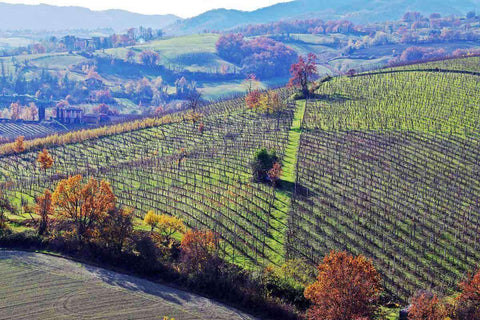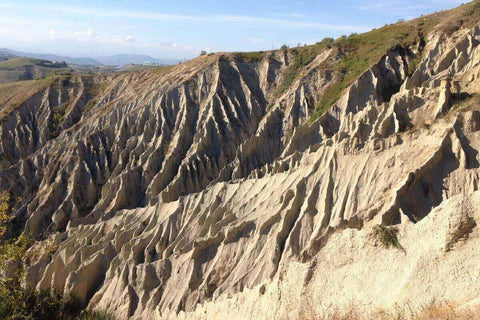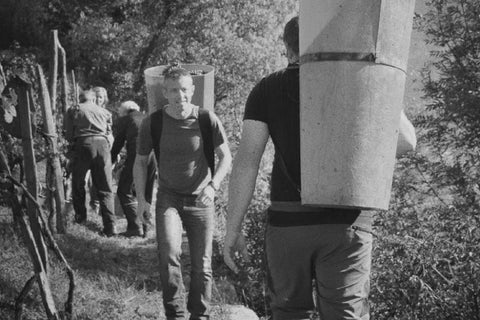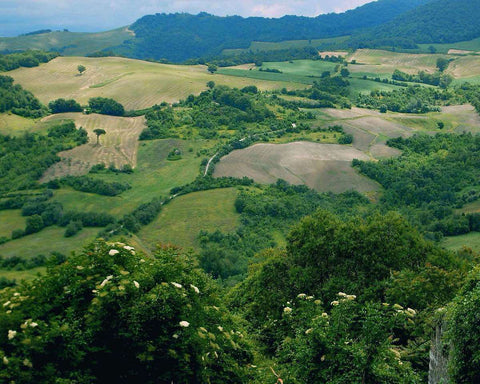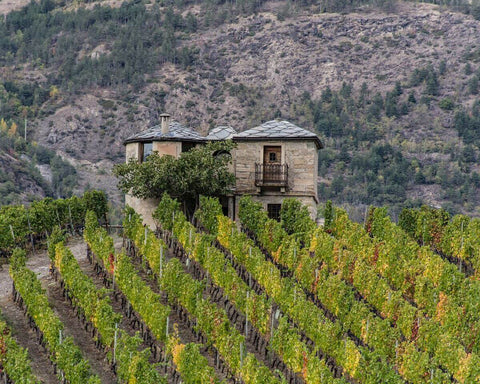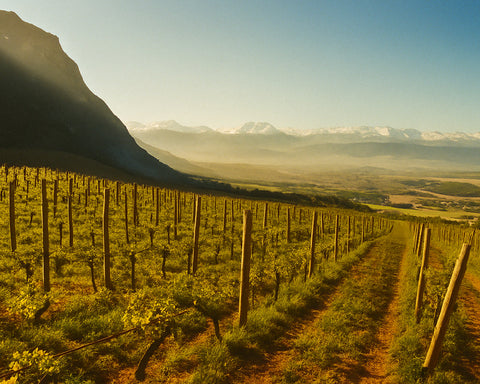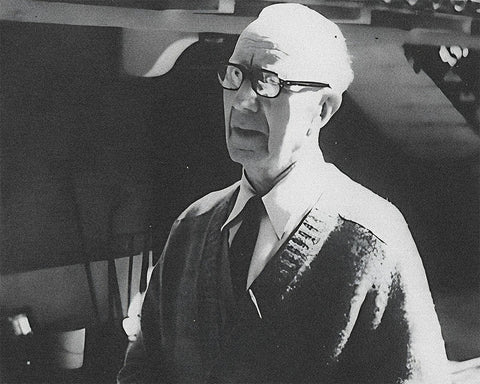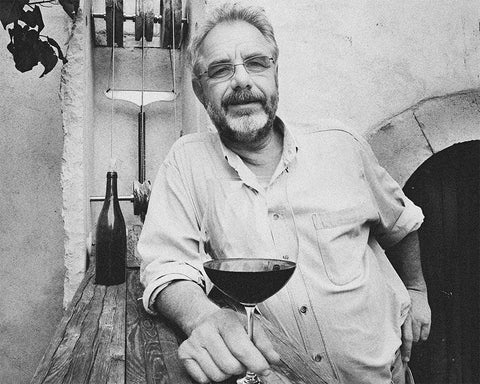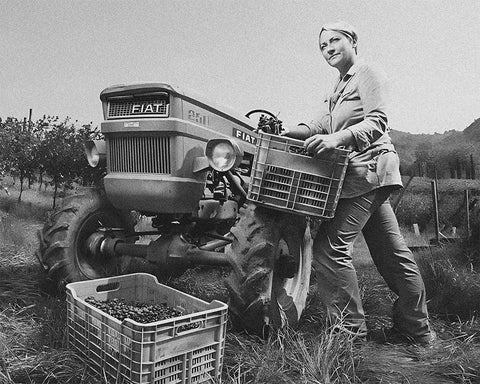Emilia-Romagna, located in northern Italy, is celebrated for its rich history, diverse cultures, and picturesque landscapes. Bordered by the Po River to the north and the Apennine Mountains to the south, Emilia-Romagna is renowned for its unique blend of natural beauty, architectural wonders, and culinary delights, making it one of Italy's most captivating and storied regions.
Over the centuries, Emilia-Romagna has evolved into a dynamic and economically prosperous region, with a strong emphasis on preserving its historical heritage while embracing modern advancements.
The region's wines, influenced by its varied terroir and climate, are celebrated for their distinctiveness and quality, reflecting Emilia-Romagna's enduring dedication to viticulture and oenological excellence.
Table of Contents
History of Emilia-Romagna
Emilia-Romagna, strategically positioned in the heart of northern Italy, has been a crossroads of civilizations for millennia. Its history is a tapestry woven from the influences of Etruscans, Romans, Byzantines, Lombards, and various medieval and Renaissance states, each leaving an indelible mark on the region's culture and traditions.
The region's Roman period began in the 2nd century BCE, marking the start of Emilia-Romagna's rich cultural heritage. The Romans founded several cities, including Bologna and Modena, which became important centers of learning and commerce. These ancient cities flourished, leaving behind impressive ruins and architectural wonders that continue to draw admiration today.
Following the Romans, the region established the Byzantine Exarchate of Ravenna in the 6th century, marking a significant cultural and artistic development period. The Byzantine influence is still evident in the magnificent mosaics of Ravenna.
The fall of the Byzantine Empire ushered in a period of Lombard rule, followed by the rise of powerful medieval communes and city-states such as Bologna, Parma, and Ferrara. These cities became centers of learning, art, and politics, contributing significantly to medieval Italy's cultural and intellectual life.
Emilia-Romagna flourished as a hub of art and culture in the Renaissance. The Este family in Ferrara and the Farnese family in Parma patronized artists and scholars, resulting in a rich legacy of Renaissance art and architecture. The University of Bologna, founded in 1088, became a leading center of education and remains one of the oldest universities in continuous operation.
The 19th century was a significant change for Emilia-Romagna. The region played a pivotal role in the Risorgimento, the movement for Italian unification. 1861, Emilia-Romagna became part of the newly unified Kingdom of Italy, ushering in modernization and economic development.
The 20th century brought both challenges and advancements to Emilia-Romagna. The region faced economic hardships during the World Wars, but its resilient spirit and cultural richness helped it navigate these difficulties. The post-World War II period saw significant development in infrastructure, industry, and agriculture, establishing Emilia-Romagna as a prominent player on the global stage.
Terroir of Emilia-Romagna
Emilia-Romagna's terroir is as diverse as its history, characterized by various microclimates, soil types, and elevations. The region's varied landscape, from the Po Valley's fertile plains to the Apennine's rolling hills, is crucial in shaping its unique viticultural landscape.
The region enjoys a continental climate with hot summers and cold winters. This climate, combined with the influence of the Po River and the Apennine Mountains, creates ideal conditions for grape cultivation. The plains and valleys benefit from fertile alluvial soils, while the hilly areas offer well-drained soils with a mix of clay, sand, and limestone.
The Geology of Emilia-Romagna
Emilia-Romagna's geology is marked by its diverse soil types, providing a fertile ground for vines to thrive.
- Po Valley: The plains of the Po Valley are known for their fertile alluvial soils, which are ideal for growing various crops, including grapes. This area is particularly well-suited for producing sparkling wines like Lambrusco.
- Apennine Foothills: The rolling hills of the Apennines offer a mix of clay, sand, and limestone soils, providing excellent drainage and mineral content. These conditions are ideal for producing high-quality red and white wines.
The diverse terroir of Emilia-Romagna allows for the cultivation of a wide range of grape varieties, each expressing the unique characteristics of its growing region.
Climate and Its Influence
Emilia-Romagna's climate is predominantly continental, characterized by hot summers, cold winters, and moderate rainfall. The region's varied topography and proximity to the Po River and the Apennine Mountains create numerous microclimates, each contributing to the distinctiveness of the region's wines.
The Grapes of Emilia-Romagna
Emilia-Romagna is home to several indigenous grape varieties, each adapted to the region's unique terroir. The most notable are Sangiovese, Lambrusco, Albana, and Pignoletto.
Red Grape Varietals
- Sangiovese: The flagship red grape of Emilia-Romagna, known for its bright acidity, cherry flavors, and excellent aging potential.
- Lambrusco: A family of grapes producing both red and rosé sparkling wines, known for their refreshing acidity and fruity flavors.
- Barbera: Known for its deep color, low tannins, and high acidity, producing vibrant, fruity wines.
White Grape Varietals
- Albana: The first white wine in Italy to receive DOCG status, known for its rich flavors and potential for both dry and sweet wines.
- Pignoletto: A versatile grape producing both still and sparkling wines, offering bright acidity and floral aromas.
- Trebbiano: Produces fresh, crisp wines with citrus and floral notes.
Top Wines of Emilia-Romagna
Sangiovese di Romagna: The quintessential red wine of Emilia-Romagna, Sangiovese di Romagna is celebrated for its bright acidity, cherry flavors, and excellent aging potential. It is a versatile wine that pairs well with a variety of dishes.
Lambrusco: Made from a family of grapes, Lambrusco wines are known for their refreshing acidity, fruity flavors, and sparkling nature. These wines range from dry to sweet and are perfect for pairing with the region's rich cuisine.
Albana di Romagna: A prominent white wine variety in Emilia-Romagna, Albana di Romagna is valued for its rich flavors and potential for both dry and sweet wines. It was the first white wine in Italy to receive DOCG status, underscoring its significance.
Other Notable Wines: Emilia-Romagna also produces a range of other exceptional wines, including Pignoletto, a versatile grape used for both still and sparkling wines, and Trebbiano, known for its fresh and crisp character.
Cuisine and Typical Products of Emilia-Romagna
Em Ilia-Romagna's cuisine is a vibrant reflection of the region's rich cultural influences and abundant natural resources. The cuisine is renowned for its bold flavors, fresh ingredients, and innovative use of meats, cheeses, and pasta, making it one of Italy's most distinctive regional cuisines.
Seafood plays a central role in Emilia-Romagna's cooking, with dishes like "Brodetto," a fish stew with fresh seafood, tomatoes, and herbs, exemplifying the region's culinary creativity. The fertile land also yields various fruits, vegetables, and grains, integral to many traditional dishes.
Among the region's most prized products are its cured meats, particularly Prosciutto di Parma and Mortadella di Bologna, and its cheeses, such as Parmigiano-Reggiano and Grana Padano. These ingredients are used in various dishes, from savory to sweet, showcasing the versatility and richness of Emilia-Romagna's produce.
Emilia-Romagna Antipasti
In Emilia-Romagna, a meal often begins with a selection of antipasti, highlighting the region's diverse flavors. A typical antipasti spread might include:
- Prosciutto di Parma: Thinly sliced Parma ham served with melon or figs.
- Gnocco Fritto: Fried dough squares served with cured meats and cheeses.
- Tigelle: Small round bread served with cold cuts, cheeses, and spreads.
- Borlenghi: Thin crepes filled with savory ingredients like garlic, lardo, and rosemary.
Emilia-Romagna Primi Piatti (First Courses)
The first course in an Emilia-Romagna meal often features pasta, risotto, or hearty soups, showcasing the region's grains and vegetables.
- Tagliatelle al Ragù: Fresh egg pasta with a rich meat sauce, known internationally as Bolognese.
- Tortellini in Brodo: Small pasta dumplings filled with meat, cheese, or vegetables, served in a flavorful broth.
- Lasagne alla Bolognese: Layers of fresh pasta, ragù, béchamel sauce, and Parmigiano-Reggiano.
- Passatelli in Brodo: Pasta made from breadcrumbs, eggs, and Parmigiano-Reggiano, served in broth.
Emilia-Romagna Secondi (Second Courses)
Emilia-Romagna's second courses often highlight the region's abundant seafood and high-quality meats.
- Cotechino con Lenticchie: A rich pork sausage served with lentils, traditionally eaten on New Year's Eve.
- Zampone: Stuffed pig's trotter served with mashed potatoes or lentils.
- Anguilla alla Griglia: Grilled eel, a specialty of the Po River Delta.
- Pollo alla Cacciatora: Chicken braised with tomatoes, onions, garlic, and herbs.
Emilia-Romagna Contorni (Side Dishes)
Emilia-Romagna cuisine celebrates vegetables, with many side dishes highlighting the region's produce.
- Erbazzone: A savory pie filled with Swiss chard, spinach, and Parmigiano-Reggiano.
- Carciofi alla Romagnola: Artichokes cooked with garlic, parsley, and breadcrumbs.
- Fagioli all'uccelletto: White beans stewed with tomatoes, garlic, and sage.
Emilia-Romagna Formaggi (Cheeses)
Emilia-Romagna produces a variety of cheeses, reflecting the region's agricultural diversity.
- Parmigiano-Reggiano: Known as the "King of Cheeses," this hard cheese has a rich, nutty flavor and granular texture.
- Grana Padano: Similar to Parmigiano-Reggiano but slightly milder and less granular.
- Squacquerone: A soft, spreadable cheese with a tangy flavor, often served with piadina.
- Formaggio di Fossa: A sheep or cow's milk cheese aged in underground pits, giving it a unique flavor.
Emilia-Romagna Dolci (Dessert)
Emilia-Romagna desserts often feature nuts, dried fruits, and local wines, creating a range of sweet treats.
- Torta di Riso: A sweet rice cake flavored with lemon and vanilla.
- Zuppa Inglese: A layered dessert with sponge cake, custard, and liqueur-soaked biscuits.
- Ciambella: A ring-shaped cake flavored with anise and lemon.
- Castagnaccio: A dense chestnut flour cake with raisins, pine nuts, and rosemary.
Typical Products of Emilia-Romagna
Emilia-Romagna's cuisine is grounded in high-quality local products, many of which have achieved protected status, ensuring their authenticity and traditional production methods.
Prosciutto di Parma
Prosciutto di Parma is celebrated for its delicate flavor and tender texture. This ham is made from carefully selected pork legs and aged for at least 12 months, which symbolizes the region's culinary excellence.
Parmigiano-Reggiano
Parmigiano-Reggiano, also known as Parmesan, is a hard, granular cheese made from cow's milk. Aged for at least 12 months, it develops a rich, nutty flavor and is used in various dishes.
Balsamic Vinegar
Traditional Balsamic Vinegar of Modena is made from the must of Trebbiano and Lambrusco grapes, aged for a minimum of 12 years in wooden barrels. Its complex flavor is prized in both savory and sweet dishes.
Mortadella di Bologna
Mortadella di Bologna is a large, smooth-textured sausage made from finely ground pork, flavored with spices, and studded with cubes of fat. It is enjoyed in sandwiches, antipasti, and various dishes.
Piadina Romagnola
Piadina Romagnola is a traditional flatbread from the Romagna region. Made with flour, lard, and water, it is cooked on a griddle and served with various fillings, from cold cuts and cheeses to vegetables and spreads.
More on Emilia-Romagna's History
- Ancient Foundations a>
- Roman and Medieval Periods
- Renaissance Flourish
- Modern Unification
- Emilia-Romagna Today
Ancient Foundations
Emilia-Romagna's history dates back to ancient times, with evidence of human settlements from the Upper Paleolithic period. The region's strategic position attracted ancient peoples, including the Etruscans and Celts, who significantly influenced its culture and development.
Roman and Medieval Periods
The Roman period, starting in the 2nd century BCE, saw Emilia-Romagna become a center of Roman civilization, with important cities like Bologna and Modena flourishing. The medieval period brought the rise of powerful city-states and communes, contributing to the region's cultural and intellectual life.
Renaissance Flourish
The Renaissance marked a period of artistic and cultural flourishing for Emilia-Romagna. The Este family in Ferrara and the Farnese family in Parma patronized artists and scholars, leaving a rich legacy of Renaissance art and architecture. The University of Bologna became a leading center of education during this time.
Modern Unification
In 1861, Emilia-Romagna became part of the newly unified Kingdom of Italy. This period was marked by modernization and economic development, with significant infrastructure, industry, and agriculture advancements.
Emilia-Romagna Today
Today, Emilia-Romagna is a vibrant region known for its rich history, diverse culture, and stunning landscapes. Its economy is bolstered by agriculture, industry, tourism, and a growing technology sector. Emilia-Romagna continues to cherish its historical sites, unique cuisine, and a blend of cultural influences, making it a fascinating microcosm of Italian history.
